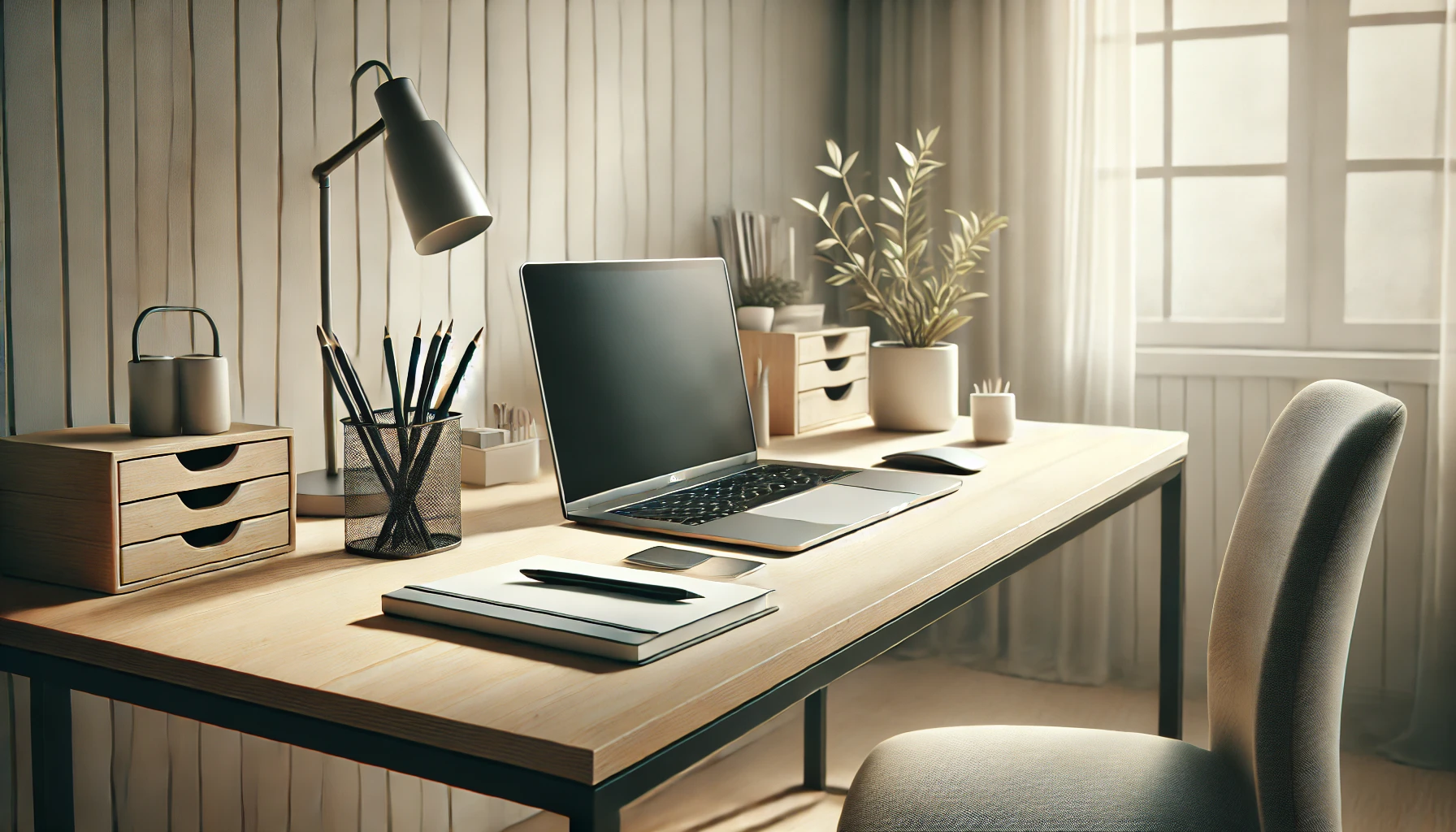Having an organized workspace is essential for boosting productivity and reducing stress. Whether you work from home or in an office, keeping your workspace tidy and organized can help you focus, reduce distractions, and accomplish tasks more efficiently. In this article, we’ll share effective strategies for organizing your workspace and creating an environment that promotes productivity.
Why a Clean Workspace Matters
A clean and organized workspace is more than just aesthetically pleasing—it’s also crucial for your productivity. When your workspace is cluttered, it can cause mental fatigue and overwhelm, making it harder to focus and complete tasks. A well-organized workspace, on the other hand, helps you think clearly, stay focused, and work efficiently.
Research shows that clutter can actually impair your ability to concentrate and complete tasks. By organizing your space, you’re setting yourself up for success and creating an environment that supports your goals.
Step 1: Declutter Your Desk
The first step to creating an organized workspace is decluttering your desk. Start by removing everything from your desk and sorting through each item. Keep only the essentials and get rid of anything that is not necessary for your work. This could include old papers, empty coffee cups, and unused office supplies.
Once you’ve cleared your desk, organize your items into categories:
- Office supplies: Keep pens, notebooks, and other items in desk drawers or on a small tray.
- Documents: Use file organizers or trays to sort your documents by category (e.g., “To Do,” “In Progress,” and “Completed”).
- Technology: Make sure your computer, phone, and other devices are placed in a way that doesn’t create clutter.
Having only the items you truly need on your desk will make it easier to stay focused and organized.
Step 2: Create an Efficient Storage System
An efficient storage system is key to maintaining an organized workspace. Invest in storage solutions that fit your needs, such as:
- Drawer organizers: Keep your pens, paper, and other supplies neatly stored in drawers.
- Shelving units: Use shelves to store books, binders, and other materials that you don’t need to have on hand every day.
- Filing cabinets: For important documents, filing cabinets help keep things sorted and easily accessible.
Labeling your storage items and files will also make it easier to find what you need without wasting time searching for things.
Step 3: Optimize Your Workspace Layout
The layout of your workspace can greatly impact your productivity. To create an efficient workspace, follow these guidelines:
- Keep your most-used items within reach: Items you use frequently, such as your computer, phone, or notepad, should be within arm’s reach to avoid wasting time looking for them.
- Create designated areas: If you have a lot of tasks or projects, designate specific areas of your desk for each. For example, one area could be for current projects, while another could hold tools or reference materials.
- Minimize distractions: Place items that are not work-related (like personal items or entertainment) out of sight, so they don’t distract you while you work.
A well-planned layout will help you stay focused and avoid unnecessary distractions.
Step 4: Manage Your Cables and Technology
Cables can quickly turn into a tangled mess, making your workspace look chaotic and cluttered. Managing cables is an essential part of maintaining a clean workspace. Use cable organizers to keep cords from tangling and to avoid them from taking up space on your desk.
You can also:
- Hide cables behind your desk or under furniture.
- Use wireless technology where possible to reduce the number of cords you need to manage.
- Label cables so you can easily identify each one.
By managing your technology and cables, you’ll create a more streamlined and visually appealing workspace.
Step 5: Personalize Your Workspace
While organization is key, don’t forget to personalize your workspace. Adding a few personal touches can make your workspace feel more inviting and motivating. Some ideas include:
- A plant or two to add a touch of greenery.
- A framed photo or artwork that inspires you.
- A motivational quote or reminder to stay focused on your goals.
Personalizing your workspace will not only make it more enjoyable to work in, but it can also improve your mood and creativity.
Step 6: Maintain Cleanliness Regularly
The final step in keeping your workspace organized and productive is to maintain cleanliness on a regular basis. Set aside time at the end of each day or week to tidy up your workspace. This will prevent clutter from building up and help you start each day with a clean, organized space.
Consider using a cleaning checklist to help you stay on track. Include tasks like:
- Wiping down your desk and keyboard.
- Organizing papers and documents.
- Decluttering any items you no longer need.
A few minutes of maintenance each day can keep your workspace looking neat and productive.
Conclusion
By following these simple steps, you can create and maintain a workspace that promotes focus, productivity, and efficiency. An organized workspace will help you stay on top of your tasks, reduce stress, and set you up for success. Remember, the key to a productive workspace is consistency—keep it clean, stay organized, and make sure it supports your goals.
